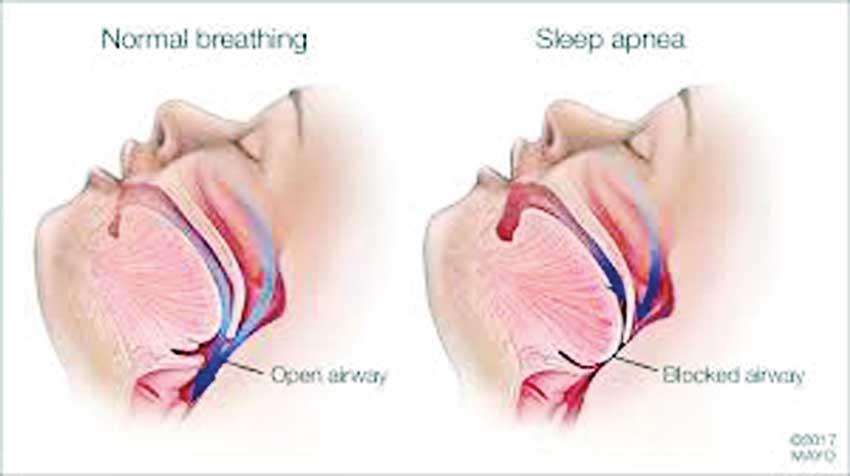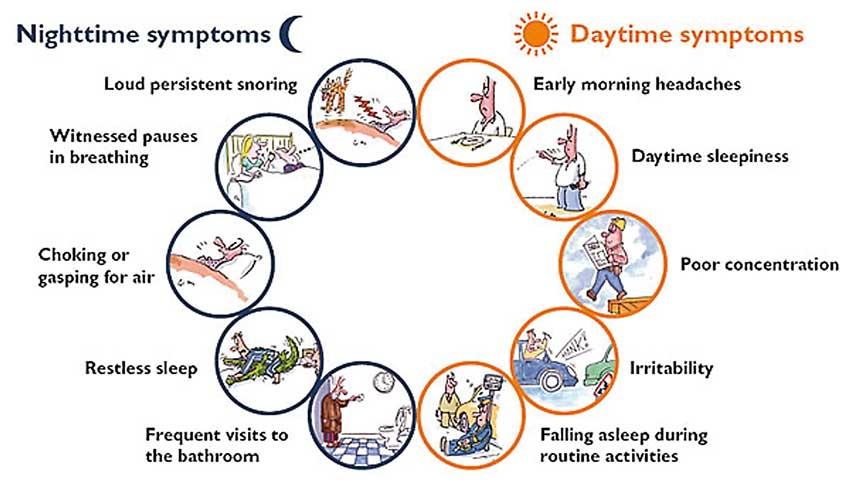Reply To:
Name - Reply Comment

 When someone snores in his or her sleep, many think that it means the person is having a deep sleep and will wake up feeling refreshed. However, Consultant Respiratory Physician and Senior Lecturer at Faculty of Medical Sciences, University of Sri Jayawardenapura Dr. Chandimani Undugodage begs to differ.
When someone snores in his or her sleep, many think that it means the person is having a deep sleep and will wake up feeling refreshed. However, Consultant Respiratory Physician and Senior Lecturer at Faculty of Medical Sciences, University of Sri Jayawardenapura Dr. Chandimani Undugodage begs to differ.
“Snoring occurs as a result of narrowing of the upper airway during sleep. During sleep, the muscles of the upper airway are relaxed and the upper airway narrows. When a person breaths through this narrow airway, snoring occurs. As the person goes to deep sleep the upper airway further narrows and at one point it could completely close! There is no breathing at this point. This is similar to strangulation. This is called an apnoea. An apnoea will cause a drop of oxygen levels in the person. The brain realising this brings the person from deep sleep to light sleep or completely awakens the person. Therefore the person gets a lot of light sleep, but very little deep sleep.
Dr Undugodage identified this condition as Obstructive Sleep Apnoea Syndrome (OSAS).
Symptoms
OSAS is characterized by episodes of partial and complete obstruction of sleep by the partial and complete closures of the upper airway. Due to the repeated interrupted episodes of deep sleep, it disturbs the quality of sleep leading the person affected to have a poor quality sleep.

This leads to various symptoms such as:
Causes
Dr. Undugodage identified obesity as being the key risk factor for OSAS. “Usually the excess fat is deposited around the neck and it narrows the airway. This could lead to OSAS,” the doctor said. She also added that since Sri Lankans have a smaller bone frame, even a little excess weight could lead to narrowing of the airway. She also said that cranio- facial abnormalities also caused narrowing of the airway. The commonest cause for OSAS in children is the presence of enlarged tonsils.
Basically any cause that leads to the narrowing of the upper airway exposes a person to the risk of developing OSAS.
Prevalence in Sri Lanka
In an islandwide survey done, Dr. Undugodage revealed that they have found 16.8 % are at high risk of developing OSAS.
Globally, males have a higher risk of developing OSAS
What happens when one has OSAS?
Due to OSAS, the sleep could be disturbed at various intervals leading to poor quality sleep. “Since the person doesn’t get the adequate number of deep sleep cycles, the individual will feel sleepy during the day and shows symptoms of sleep deprivation,” Dr. Undugodage shared. She added that sleep deprivation leads to poor productivity and memory issues. One of the biggest problems of daytime sleepiness is the increased number road traffic accidents due drivers falling asleep at the wheel.
Due to low levels of oxygen (intermittent hypoxia), the body will also be releasing excess of stress hormones which lead to heart rhythm abnormalities and also puts the person at high risk of developing heart attacks, high blood pressure (hypertension), strokes and diabetes. There is also the possibility of dying in their sleep.
She also revealed that there is a risk of developing cancer as cell regeneration gets interrupted during the fragmentation of sleep leading to abnormal cell regeneration and growth. This could also lead to inflammation which causes endothelial dysfunction.
“OSAS could also lead to a condition called polycythemia- which is due to excess haemoglobin in the blood. This condition occurs due to the repeated hypoxia which causes excess reproduction for haemoglobin,” she added. In addition OSAS is associated with impotence informed Dr. Undugodage.

Diagnosis and treatment
Dr. Undugodage stated that when a doctor suspects that the patient has obstructive sleep apnoea syndrome, the individual is then referred to a specialist managing sleep disorders. In Sri Lanka OSAS is usually managed by respiratory (chest) physicians and ENT surgeons with a special interest in sleep medicine. She further stated, “We do a detailed sleep assessment in all the patients. The patients undergo a fibre optic laryngoscopy to visualise the upper airway. Their thyroid hormone level is also checked. They also undergo an appropriate type of sleep study. Sleep study is an overnight recording of various parameters while the patient is asleep. There are several types of sleep studies. These are done by trained personnel. With the help of the sleep study, OSAS can be diagnosed,” she explained.
When talking about treatment options, Dr. Undugodage revealed that the most commonly used treatment option is Continuous Positive Air Pressure (CPAP) treatment. “This is a device that generates a jet of air under pressure, which splints the airway open and prevents it from closing and thereby preventing apnoeas. With this device a patient with OSAS manages to enjoy quality sleep,” she said.
Another treatment option is mandibular advancement devices. This treatment isn’t available in Sri Lanka.
“Sleep surgery (palato- pharygo plasty) is another option available for patients which offers a lifetime cure. The patient has to be assessed for the suitability for surgery,” stated Dr. Undugodage. She also shared that bariatric surgery is an option for the very obese patient.
In addition, all patients diagnosed with OSAS should undergo lifestyle changes, which include diet and exercise in order to lose weight. They should also get themselves checked for diabetes and high cholesterol.
Diagnosis
“There are screening questionnaires available to check whether you have OSAS. One such is the ‘The Stop Bang Sleep Apnea Questionnaire’ and that is available online,” she informed.
Finally, Dr. Undugodage stated that if someone snores there is a possibility that he or she has OSAS. “Therefore if you snore, better get yourself checked out before it’s too late,” she said.